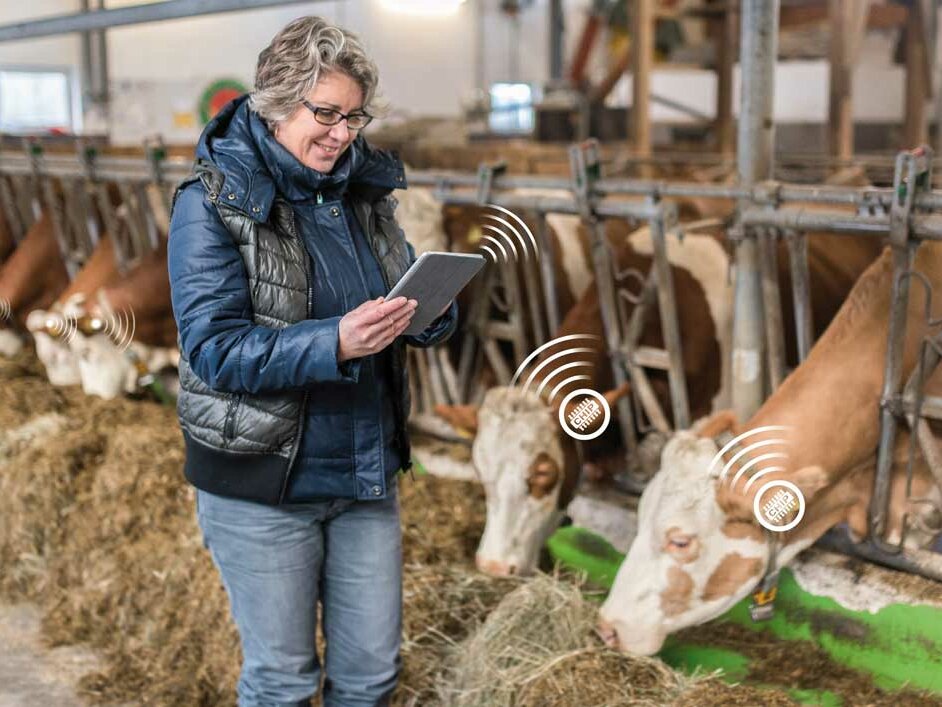Veterinary treatment per video?
By Jörg Held, editorial manager of the online news portal wir-sind-tierarzt.de
In international comparison, veterinary telemedicine remains seldom used in Germany. During the current corona crisis, depending on the survey results consulted, only from 5 to 21 % of the country’s pet veterinary practices offer telemedicinal consultations. Even EU countries viewed as structurally conservative, e.g. Italy or Spain, have overtaken Germany in this respect with telemedicine consultation percentages of 30 and 50 %. There are no figures available for this approach in farm animal veterinary medicine. One reason is the more restrictive legislation applying to food-production animals. But this dynamism in pet practices could influence developments in the farm animal segment.
Online prescriptions permitted in France, Great Britain and the USA
In fact, it was the vets themselves that encouraged government in France to launch an eight-month pilot project permitting telemedicinal treatment including online issue of prescriptions. Requirements: any digitally treated pets must be physically presented at the vets’ practice at least once a year. The rule for farm animals is that vets much have visited the farm in question at least twice within a year.
In Britain (92 % of practices) and the USA (60 %), many pet practices offered telemedicinal consultations even before the corona crisis. This service has been significantly expanded now because strict corona lockdown regulations have reduced the possibility of vet visits to only the most urgent cases. Exceptional regulations now allow prescriptions purely on the basis of online consultation for pets, as well as farm animals.
Digital health: A billion-euro business
For some time now, »digital health« has been seen as a growth market. For instance, in the German human medicine sector a 30 billion € annual growth in digital medicine is predicted. Even before corona, pilot projects permitted complete online treatment from video diagnosis right through to electronic prescription issuing. In practice, the crisis led even to the transitional introduction of online sick leave certificates. The political power behind such developments is being fuelled by fear of gaps forming in the treatment network, particularly in rural areas. In fact, telemedicine for humans is already recognised as a third pillar of medicinal support alongside outpatient and hospital treatment. To allow this approach, the previous absolute rejection of purely online medicinal consultations has been relaxed by the country’s general medical council.
In veterinary medicine, market volumes are lower although development dynamic is similar. Lack of vets in some regions also significantly affects the farm animal sector and an associated increase in customer desire for digital services apply here too. The (professional) legal limitations are, however, (so far) notably stricter. After all, unlike human medicine there’s no direct online contact between (animal) doctor and patient. Where vets are concerned, there’s a communication diversion via the animal owner - with all the risks of false interpretation and misunderstandings involved. After all, photos, videos and data cannot presently integrate all information over animal illnesses.
»Telehealth« is not »telemedicine«
The euphoric prognoses on turnover apply to the overall digital health market – also known as »telehealth«. This stretches from digital health consultations/advice over sensor technologies for collection of health data right to their interpretation via artificial intelligence (AI). Telemedicine is, on the other hand, the segment concerning concrete diagnostics and treatment recommendations through to online prescriptions. For veterinary medicine in Germany, all these aspects are so far tied to physical contact with the animal(s) themselves. In other words there remains a ban on remote treatment.
The Netflix generation wants virtual veterinary care for pets
Once again, looking back before corona it was obvious there would be no holding back on digitalisation, and this applied in veterinary medicine too. The »always-online« millennial generation step-by-step begins to represent the majority of livestock farmers. Those involved expect their information, contacts and advice to be available via mobile ‘phone app and are thereby completely at home with subscription models à la Netflix or Spotify and it would not be sensible to ignore the wishes of such customers.
For instance, following this route in the USA now sees such digital services applied as tools for customer-binding. Client satisfaction and a feeling of security are driving forces behind vet apps in the USA offering 24/7 service. Such a deal is often part of an all-inclusive contract called »Petcare-Plan« where a monthly flatrate fee buys a package with on-location treatment plus round-the-clock access to an online vet.
This international development of dynamic services makes things very difficult for the traditional veterinary practice. First of all, technical know-how is missing with the former, as is often the capital for developing own apps and accompanying services. Secondly, the legal framework for established veterinary practices is less than digitally-friendly.
What form can veterinary telemedicine take?
Vets in Germany are subject to a complex legislative system integrating veterinary professional law, medical and pharmaceutical legislation and the sector’s payment structure. Companies outwith the medical/veterinary sector, on the other hand, are relatively free to test the system through trial and error with regard to market segments that can be moved into, barriers that can be perhaps nudged aside a little, and others that cannot. When a warning is given, they can back-peddle a bit. However, this strategy of »simply having a go to see if it works«, is not allowed for veterinary practices.
Regional veterinary councils and the Federal Association of Practicing Veterinarians in Germany currently seek guidelines as to how veterinary telemedicine can be best developed. Just as has taken place with human medicine, a strict »remote treatment ban« could well become a »remote treatment permit« bound to clearly defined criteria. It appears as imperative that an online vet must have laid eyes on, and examined, the treated animal at least once or twice a year, analogous to general herd or flock treatments.
Conceivable is also requirement for minimum qualifications with regard to every online vet (professional experience in years, further training and educational courses attended, detailed work in veterinary practices). Online consultation and definitely virtual diagnostic work demand day-to-day experience in veterinary practice. Probably there would also be a requirement for registration as a veterinarian in Germany so that »online vets«, just like their conventional hands-on counterparts, can be equally subject to regulating legislation. If prescription medication is able to be ordered following online examination, then it can be expected that such medicines would definitely not include antibiotics.
Summary
To achieve everything at the same speed of present digital developments is not as easy as it seems. In Germany, for instance, professional regulations and legal standards must be altered first. Clearly: digital veterinary medicine must not be forbidden. Instead, a regulating system encouraged that puts conventional veterinary practices and online/digital services on an equal footing.
Whether the digital advantage for farm animal veterinary medicine will also lead to more video consultations in this area, remains open. Expert farmers would certainly be suitable partners in telemedicinal communication. Legislative requirements and social acceptances still, however, specifically set great store in the vet’s place of work remaining on the spot, i.e. in the livestock barn.
Commentary: Taking the digital challenge seriously
In terms of digital veterinary medicine, farm animal production is well ahead of the pet sector. Whether a chip in the ear, a neck sensor or a bolus in the stomach/rumen, these tools are already used for monitoring systems, recording active and resting periods, registering which animal is feeding properly or whose water intake is poor. In housing, microphones pick-up coughing attacks and infrared cameras scan body temperature, video monitoring identifies tail biters. The addition of sensor data combined with evaluating algorithms can nowadays recognise health problems before the first clinical signs are apparent. Here too, digital startups as well as barn equipment firms and international pharmaceutical concerns drive such developments onwards.
If all this data are to be optimally evaluated, then the doctor of veterinary medicine competes with »Dr Artificial Intelligence«. Will, in future, artificial intelligence recommend medicament for animal X, or treatment Y? Will the livestock farmer request from the farm vet a treatment recommended by an algorithm? Will the digital diagnosis still have to be verified? On-the-spot in the livestock barn? Or will the data and a virtual examination via mobile ’phone video be sufficient? Will sensor technology in large herds balance out the lucrative treatment of individual animals? Or will time pressures mean animal monitoring being taken over completely by sensors?
All these questions are in no way resolved so far. And this makes (sensor-aided) telemedicine for farm animals – alongside all the factual, technical and ethical debates – a highly sensitive subject. While, in the final analysis, it may be irrelevant for politics whether hound or hamster is examined by video, things are very different with farm animals. After all, they produce our food, and this must be done with safety in mind. Also to be considered are husbandry and welfare questions and the strict minimisation of antibiotic use: both bitter political battlefields in Germany.
With vets and livestock producers discussing the dynamic development of digital medicine, and telemedicine an important theme with pets too, it must be clear that the application of legislation will be influenced mainly by the farm animal sector. Needed are telemedicinal pilot projects as in France where the state ensures digital challenges are recognised and taken seriously – in both household pet and farm animal medicine.

Photo: Private




